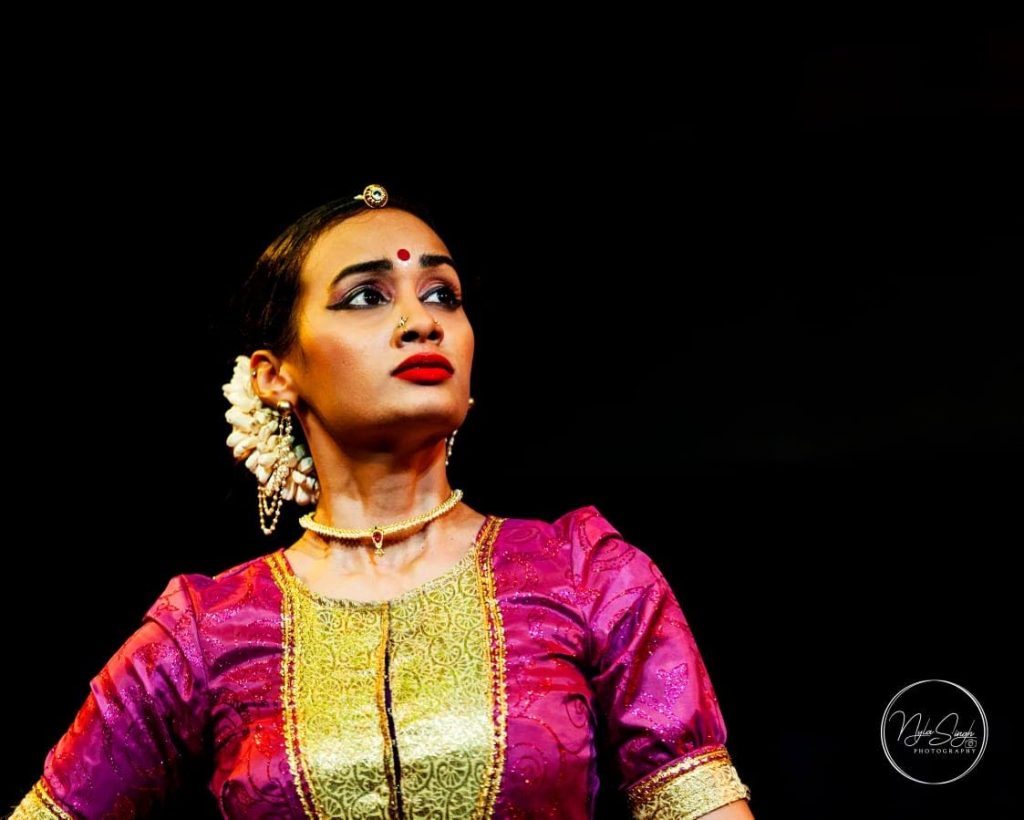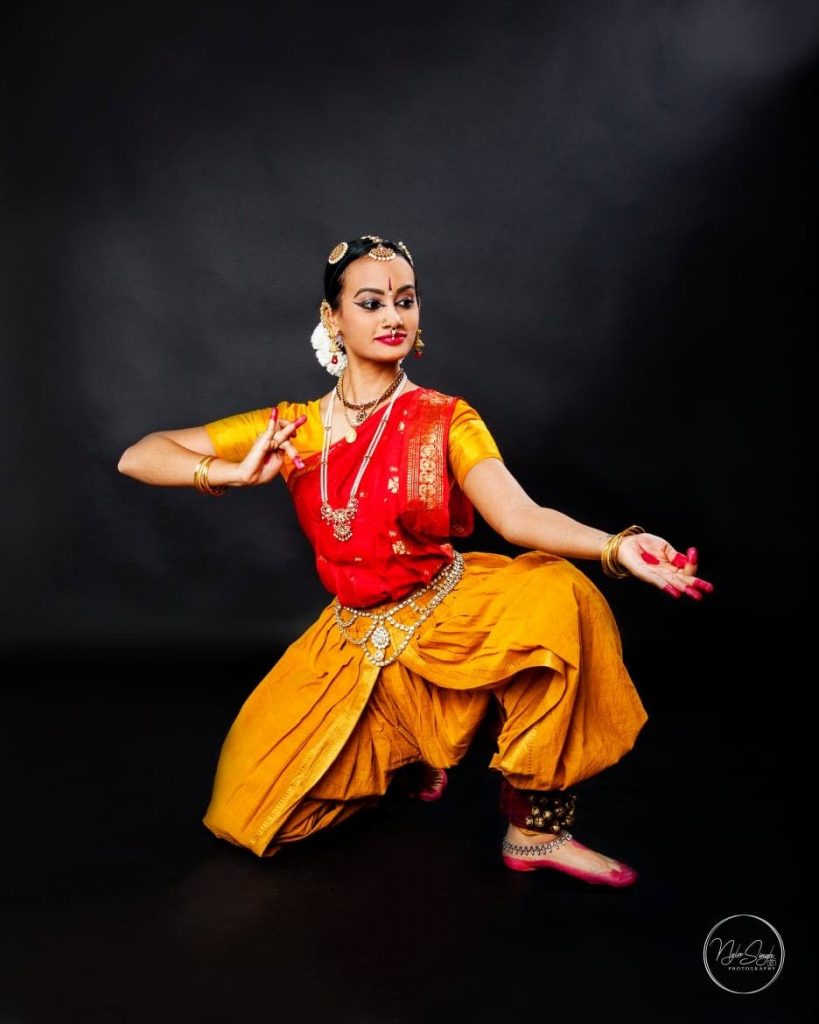Alana Rajah: Dancing with a purpose

TT’s society is misinformed and too lazy to do the work and research to understand where their religious beliefs came from.
Alana Rajah, Indian classical dancer and founder of the Adavallan Art Academy, Chaguanas, said not being properly informed and not knowing the history of their ancestors and cultural upbringing has led to young Hindus taking the elements they liked about the religion and leaving the rest behind.
She recalled that as a child in a Hindu home she was confused about many of the practices she was taught. “If you look at Hindus in Trinidad we are very ritualistic. We practice and identify with what our ancestors held on to and fought to keep. So what we continue to practice now is actually what was done in India ages ago.”
She observed that devotees in India, unlike TT, took a more philosophical approach to Hinduism where the act is less important than the principle or reason behind the action. “It was only when I went to India at age 19 that I was exposed to the study of the religion and the culture. Then I understood the umbrella of the religion and what it actually entailed and what the practices are meant to do for an individual.”
Rajah, 29, studied for a diploma in Bharatanatyam, one of the eight forms of Indian classical dance, at the Kalakshetra Foundation - The Rukmini Devi College of Fine Arts for four and a half years. Equivalent to a BA in Fine Arts, her main study was dance.
She explained that all the forms originated in temples and were not for public consumption. The women of the temple dedicated their lives to the gods and were in charge of different rituals such as feeding the gods, cleaning, making the sweets, and more. Each ritual had a dance attached to it and was a form of worship. The dances were later organised into the different dance forms so that Indian classical dance was now an artform rather than religious dances.
In addition to dance, she had to go through the Gurukula system, an oral tradition of learning; was taught four languages including Sanskrit, history and heritage of Indian culture and Hinduism, mythology, temple architecture, Vedic heritage, martial arts of India, Carnatic music, and more. Hers was a holistic education on Hinduism.

Rajah said she noticed some younger pundits communicated better with youths and made the lessons of the epics relatable and easier for youths to understand. However, she stressed it was still the pundit’s perspective so individuals should do their own research and gain their own understanding of the texts.
She added that her students, whose ages range from 17 to 25, were more comfortable learning about Hinduism through dance than at a temple or participating in puja. She said the students were very curious and did not want to be told what to do without a reason.
She explained that in dance they portrayed many of the epics based on the gods and goddesses and their attributes. Therefore, when instructing her students she had to explain everything, including the poses, not just because the children are curious, but because with that understanding they danced with purpose.
In addition to ignorance, Rajah believed that stances and attitudes of religious leaders have driven youths away from Hinduism. She said in TT the religion has become steeped in racism and has negative connotations.
She said a stigma is attached to religion due to the statements made by and unnecessary battles fought by religious leaders. She said elders were no longer teaching younger ones that they should love everyone despite religion, financial or social status, race, or other differences.
“At the end of the day the religion is all about being encompassing and kind to others, accepting each person as different, and each person as having a purpose and not being better than each other. We are all an equal source of that same energy, that one universal energy that blankets each of us, that we consider God.”
One of the areas in which this should be applied was the issues of the LGBT+ community. She said homosexuality and gender issues exist and nothing good comes of hate. She said there are carvings depicting homosexuality, polyamorous relationships, and other sexual and gender subject matters on the walls of temples in south India.
“Who are you to judge if it’s on a temple wall? It’s hypocritical for you to stand as a religious leader or as a devotee and try to give evidence against what you’re seeing. It’s a part of history and not for you to say if it was right or wrong.
“This whole mentality of judgement is what is spiralling us down as a mixed culture. We have so much freedom to express ourselves however we like. At the end of the day we have to respect where each other came from and the lessons behind the rules, regulations and practices of the religions rather than just blindly doing things or following leaders.”
Rajah is also not a fan of TT’s Divali. She said it was the country’s biggest Hindu festival, not because of its religious significance but because of commercialism. She said it did not represent Indian and Hindu cultures in its true form. She added that in India, Divali is celebrated simply with the use of fireworks, firecrackers, and individuals lighting up the puja areas in their homes. In fact, she said only a sect of Hindus fasts for Divali.
However, she said it an auspicious time because of the change in the seasons determined through numerology and astrology. “It’s a time of change. A time for individuals to cleanse and get rid of any negativity we may be holding on to. It’s a fresh start because the alignment of these planets affects our body composition and make up. That energy affects us – the way we react, think and experience things.”
She said the cleaning of their surroundings, fasting, and giving of charity is a way for devotees to cleanse themselves so when the shift happens, they are in a frame of mind to attract and accept positivity in their lives.
To Rajah, other periods and festivals were more authentic. For example, she said the dance performed at Ramleela is older than Indian classical dance and still being practised in TT just as they do in India. She lamented that Ramleela, which she said was associated with Divali, was “swept under the carpet.”
She said the story of Ramleela was the epic of the return of Lord Ram or Shree Rama from exile and Goddess Lakshmi led his way home. The tradition occurs every year before Divali. “It is a human experience but he (Shree Rama) was always led by a spiritual entity. He stayed true to his spiritual principals and way of life. So he is a human example of the hardships life could entail, what we have to endure, and how he processed and reacted to all those experiences, not letting go of his religious practices and the values that were instilled in him.”
She said Lord Ram was an example of how humans have to stay strong and be true to their spirituality so as to face and be victorious in the various battles they may undergo during their lifetime.

Comments
"Alana Rajah: Dancing with a purpose"